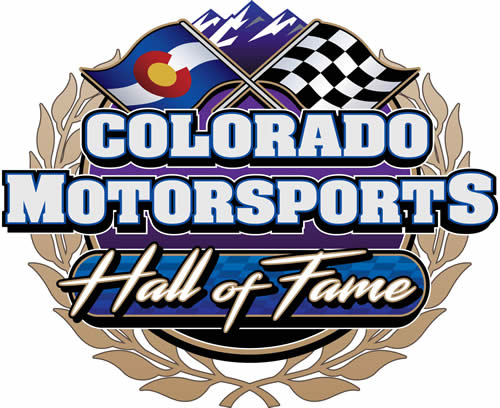Induction Class of 2016
Gray Brumfield
The recipient of the 2016 Jerry Van Dyke Award, which is given as recognition for contributions to Colorado Motorsports by an individual, is Gray Brumfield for his decades-long commitment to supporting Sports Car Club of America events and operations. Gray began his involvement in road racing in 1953, when one of his co-workers at Bell Telephone Laboratories in New Jersey was building a race car and invited him to attend races at Bridgehampton Raceway. Though this was his first race, he knew he was hooked! He applied to the SCCA and was accepted. His race involvement consisted of some pit crew work and watching the races, one of which included a young Roger Penske in an MG-TC. In 1955, an official asked him to serve as a corner marshal by saying “you look bored, how about helping me? Take this yellow flag, go up the hill and display it if somebody spins or stalls on the course.” It was the beginning of 50-plus years of being part of the flagging and communications specialty so integral to SCCA events.
Gray was bitten by the racing bug, and in 1957 purchased a 1955 MG-TF, attended driver’s school, and received his competition license. His driving career was comparatively brief, however, when seen alongside his ongoing work toward developing safety and on-track communication programs within the SCCA organization. He helped form a training program for track workers, as well as the development of a national standard for corner flag use that is the basis for contemporary flagging practice. A racing accident that left him severely injured in 1958 convinced him of the need to provide greater protection for corner workers, and he was instrumental in developing designs of corner bunkers to shield flaggers from spinning race cars that have evolved to the stringent standards used at tracks across the country today.
A job opportunity brought Gray to Colorado in 1969. After searching out the local SCCA chapter, he joined the region’s club as they lost one of their track, the beautiful Continental Divide Raceway. He helped locate another facility is Aspen, only to lose it after a few years. The group then converted and abandoned airport in La Junta for racing use, and over the years coordinated SCCA activities with Second Creek Raceway, Pueblo Raceway, Mead Raceway, and Pikes Peak Raceway. Most recently, Gray became one of the principal figures involved in the building and operation of High Plains Raceway, located near Byers, Colorado. This state-of-the-art facility has many of the safety features Gray has championed over his long involvement with road racing, including substantial safety bunkers on each corner to protect flaggers who are there to maintain control and safe racing communication.
While Gray has stepped back from corner work at road races these days, he is still active in race communications at various racing events, and continues his 60+ years of significant contribution to motor racing. He is a most deserving recipient of one of Colorado Motorsports Hall of Fame’s most prestigious awards!
Chris “Spiffy” Leaf
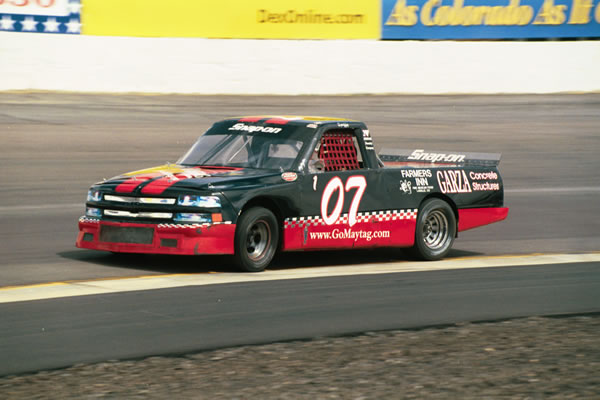
Chris “Spiffy” Leaf was born in Greeley, Colorado in 1968, and grew up in nearby LaSalle. He began his racing career at Colorado National Speedway in 1986, and competed in Dwarf car, Street Stock, Grand American Modified, Pro Truck, and Southwest Tour Late Model divisions. In addition to racing and winning multiple division titles at CNS, Chris raced at I-76 Speedway, Rocky Mountain National Speedway, Lamar Speedway, Holyoke Speedway in Colorado, Big Country Speedway in Cheyenne, Wyoming, and tracks in Amarillo and San Antonio, Texas. Until his passing as a result of a motorcycle accident in Florida, Chris had raced for 23 years, winning 39 races on dirt tracks and 66 races on pavement tracks while claiming a total of 10 Championships in multiple racing divisions. A shining example of his competitiveness can be found in the recalling of a major, 2-day event in Amarillo, Texas. After starting in the back of the 7th heat, Chris did not qualify for the main event on Saturday. The following day, he won the E-main, D-main, C-main, and B-mains. He started the feature event at the back of the pack, lost his brakes with 40 laps to go, and finished 6th with the right rear tire worn down to the cords on a car “without a scratch on it”. “Spiffy” was a driver that lived to race, and at the time of his passing had both a Pro Truck and a Super Late model complete and ready to go for the upcoming season. His competitive fire and skill in handling his race car are missed to this day by both fellow drivers and race fans throughout the region.
Clarence Krieger
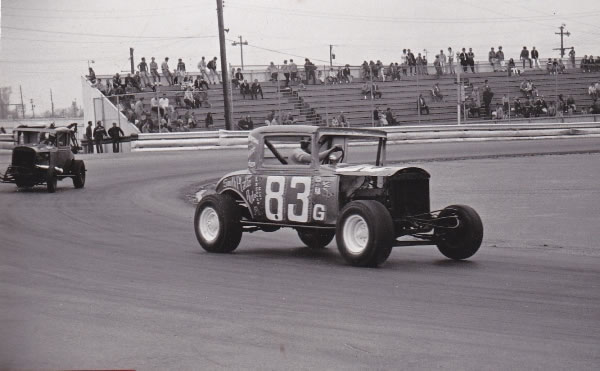
Clarence Krieger, a life-long resident Garden City, Colorado, made quite a name for himself “turnin’ left” at tracks throughout the northern Colorado region. Clarence, who was nicknamed “Tiger”, started racing in the early 1950’s. For over thirty years, Clarence raced primarily at Lakeside Speedway in North Denver and Intermountain Speedway in Cheyenne, along with many stops at other area tracks. Tiger would often be in the field at when Longmont, Greeley, and Fort Collins had tracks. Many· nights between races were spent in his one car garage working his race car along with many faithful friends and several cases of beer. The car was loaded and always ready to go with family and crew to Cheyenne on Saturday and Lakeside on Sunday. He was one of the few drivers who would tow two cars to the track in order to race in both modified and late model divisions.
Clarence has won several championships during his career, including a Tri-State title for wins in Wyoming, Nebraska and Colorado. He is most proud of his many perfect attendance awards at both Lakeside and Cheyenne, and was awarded Lifetime memberships with the Wyoming Auto Racing Club in 1968 and CARC in 1974. He was inducted into the Hall of Fame for both clubs in 2010.
While on-track performance has defined his racing career, Clarence contributed to the sport by guiding and mentoring young drivers just starting out, including Chris Leaf, who went on to become one of the winningest drivers at Colorado National Speedway in pro truck, Grand American Modified, and Late Model divisions. He also has fond memories when then “up-and-coming”, as well as established racers like International Motorsport Hall of Fame inductees Bobby Allison, A.J. Foyt, and Hershel McGriff competed in the area and worked on their cars in his garage.
Today, pictures of his first race car–a 1935 Chevy sedan with a 216 6-cyllnder motor–hang from· the walls in his garage, along with other photographs of a youth spent stock-car racing and 100’s of his trophies. After more than 60 years of involvement, Clarence Krieger still has the passion for and dedication to racing. He can be quoted as saying he would not have had the many successes and great memories in racing if not have been for his family and many friends that were there for him every day, along with great sponsors that he maintained strong relationships with for over thirty years. Clarence passed away in September, 2020.
Darrell Smith
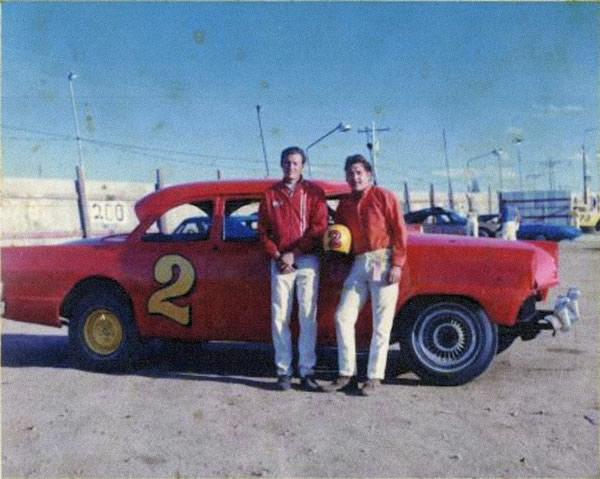
Unlike other racing champions, Darrell Smith didn’t come from a racing family background. Fresh out of High School, and with the encouragement of Hall of Fame Member Wayne Etter, Darrell tried Drag Racing and found it wasn’t his cup of tea. After serving in the Army from 1960 to 1963, he visited Englewood Speedway with his friend Bill Schouten to watch the Figure 8’s, and he fell in love with this type of racing. Two weeks later he built his first Figure 8 car, with which he earned just $5.00 for the season. After this not-so-impressive start, Darrell’s passion for figure-8 racing pushed him to become a top car owner, builder, sponsor, crew chief, driver and award winner while competing at Englewood Speedway, Lakeside Speedway, Rocky Mountain Speedway, I-76 Speedway, Colorado National Speedway, Pikes Peak International Speedway, Century 21, Continental Divide Raceway, Colorado Springs International Speedway, I-25 Speedway and Colorado Motor Sports Park, as well as many tracks out of state.
Darrell was the 1971 Charger Champion at Englewood Speedway, 3 times Enduro Champion at I-76 Speedway, had 13 wins in Demolition Derby, and was chosen Fan Favorite at Englewood Speedway six times.
Darrell has sponsored and given a seemingly endless number of drivers their start in racing through the businesses he has owned, including Baltic Auto Wrecking, Arvada Auto Wrecking, and for over 30 years, Mr. Badwrench Used Auto Parts. Darrell has won many awards including: 1992 NASCAR Gold Wrench Award, 1992 Car Owner of the Year Award at Colorado National Speedway (CNS), 2003 Carol Asbury Overall Sportsman Award, 3 time Sportsman of the Year, and 2014 Overall Sportsman of the Year at CNS. As a car owner and crew chief, he was Claimer Champion with Tom Alexander at Englewood Speedway, 1967 Figure 8 Champion at Englewood Speedway with Bob Jackson, 1989 Figure 8 Championship with Dave Tansey at CNS, and 1991 Figure 8 Championship with son Mike Pratt at CNS. He also served as Owner/Crew Chief for Richard Burton in the Grand American Modified division, Crew Chief for Mike Pratt’s Southwest Tour, Late Model and Figure 8 cars, and Crew Chief for Emett Grazier’s Super Late Model. Racers who have driven for Darrell include: Bob Jackson, Mike Pratt, Chuck Tuffield, Ray Slife, Pete Brandenburg, Dave Tansey, Tom Alexander, Mike Craig, Anthony Martinez, Rodger Burnett, Dale Deter, Roger Avants, Richard Burton, Harry Livermore Sr., Craig Moore, Allen Batt, Greg Carroll, Lance Newman and Sean Smith.
Throughout Darrelll’s career, his crew members were his family and friends that became like family, and three of Darrell’s crew members have won Gold Wrench Awards. Darrell has participated in many special events to support racing, and has enjoyed a 45 year racing career with near perfect attendance of weekly programs. He is always quick to help someone in need, and has always seemed to have a line of people at his trailer borrowing parts during a lifetime of competition. Darrell passed away September 2018.
Davey Durelle
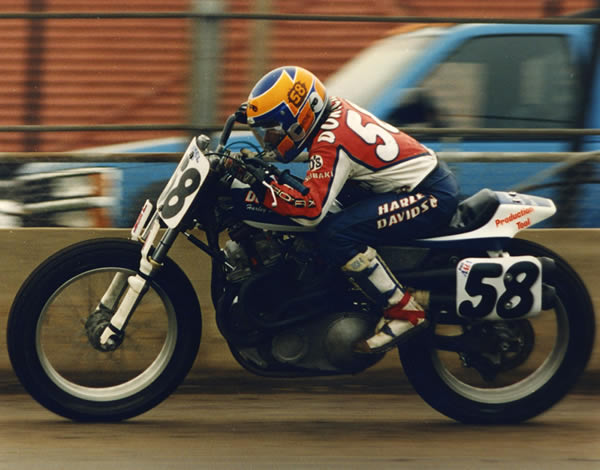
Davey Durrelle got his first motorcycle at age ten, rode in his first race at age eleven, and won his first short-track race in 1978. In 1980, he turned pro and became Novice Pro #127K. He won both Sturgis half-mile events that year and finished the year as 8th-ranked novice in the nation. He moved to the expert division in 1982, and won major races at the DuQuoin, Illinois mile and Sturgis half-mile over the next two seasons. After racing as much as he could from 1984 to 87, he formed a racing team with Butch Donahue to compete in the AMA National Series. The team was a success, finishing high in the order at major events in Indianapolis, Springfield, Pomona, and San Jose mile tracks. After winning the Camel Challenge at San Jose in 1992, he suffered significant injuries in two separate incidents that led to a curtailed racing schedule in 1993 and 94. He retired from the Grand National Series in 1995.
Davey Durrelle won the AMA Western Region ½ mile championship in 1984, 1987, and 1988. In 2001 he came back to race the Formula USA series and won at the Delmar Mile. In addition to his oval track accomplishments, Davey competed in the Pikes Peak Hillclimb from 1996 to 2011, winning the 250cc class in 2010; the 450cc class in 2006 and 2011; the 500cc class in 2002, 2003, 2004 and 2005; the 750cc class in 2007, 2008, and 2009; and the Open class in 1996, 1997, 1998, 1999, and 2001. He claimed the overall Pikes Peak record in 2007, an incredible 15 wins in 15 races! From 2012 to 2015, Davey won 4 classes each year for a total of 15 championships, and in 2013 and 2014 won the Colorado Ice Racing Championships in both 250 and Open classes.
His record speaks clearly for itself—he is a “champion’s champion” and a most deserving inductee into the Colorado Motorsports Hall of Fame!
Don Hackenberg
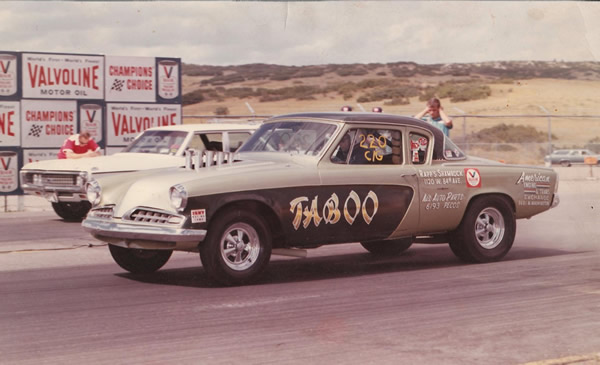
Don Hackenberg grew up in the Denver area, and like many teenagers, found an interest in fast cars and drag racing. In the late 50’s and early 60’s, Don began his involvement with drag racing when he helped work on a 1948 Fiat with a Blown 392 Hemi that was owned by Pop Marner, and had a chance to drive the car a couple of times.
In 1967, Don opened American Engine & Transmission Exchange, and that’s when his racing career really took off. Starting with a 1967 Dodge Coronet called “Dodge Fever” that was powered by a 426 Hemi, Don built and successfully campaigned MOPAR powered cars in numerous racing divisions, with many track records and national championships to show for his efforts. A few of these cars included a Modified Production Class (A/MP), Hemi-powered 1954 Studebaker called “Taboo”, a factory 1968 Hemi Barracuda that ran in the Modified Production Class (B/MA) called “Sunday Punch”, and a small-block rear engine dragster called “Vamoose” that was campaigned in the Super Pro Class at Bandimere Speedway. In addition to his on-track success, Don was instrumental in grooming many of the Mopar racers who enjoyed racing success in the Denver area.
In the late 1990’s, Don shifted interest to Stock Car racing, and was instrumental in bringing Mopars to Colorado National Speedway and several other regional oval tracks when he built engines for a number of successful racing teams in Late Model, Truck and Modified divisions.
In 2004, Don’s skills and competitive instincts came to life when a very special Chrysler aluminum small block came into his possession. He collaborated with his longtime friend, Mike Molgard, on the development of a MOPAR 427 Aluminum Small Block. The result was a hybrid that was part circle track, part drag racing, and all small block Mopar. It was a pioneering effort with many obstacles, but the result was unique, offering a level of performance from a small block configuration normally only available from a big block. In the end, the motor was the ultimate sleeper, being housed in Mike’s CE65 Belvedere sporting full factory interior, and running 10.54 seconds in the quarter mile.
While Don has scaled back his week-to-week racing operations, he still goes to the shop every day to do the work that he loves: building high performance motors, as he has in a long, successful motorsports career.
Harold “HJ” Evans
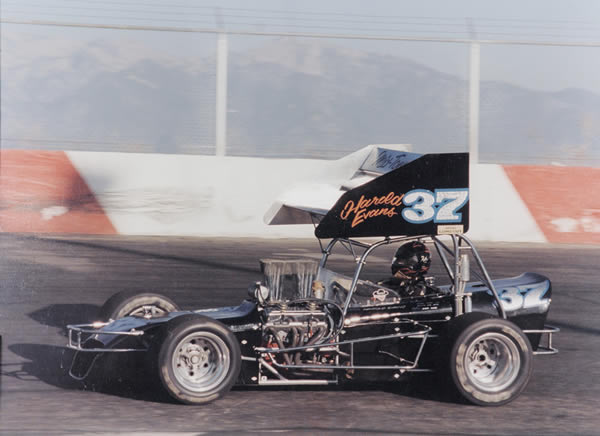
By any number of measures, Harold Evans is one of the most accomplished oval track drivers in Colorado racing history. His career began by driving quarter midgets from age 7 to 10, Go-Karts form age 10-14, and motorcycles form age 14-16. He went on to “dabble” in midgets, sprint cars, late models, an, eventually, his race car of preference: the Supermodified. He was the Englewood Racing Association rookie of the year in 1968, and eventually served as the club’s president for 19 years. A high point came in 1978, when Evans Racing purchased a Malloy Roadster. Jerry Malloy and “HJ” formed a team that was together for many years and enjoyed a great deal of success. Harold Evans’ competitive achievements include 18 ERA season Championships, as well as Supermodified division track championships at Beacon Hill/I-25 Speedway, Colorado Springs International Speedway, Big Country Speedway, and Colorado National Speedway, for an amazing total of 33 career championships, while setting ERA and track records that stood for many years at ten tracks in Colorado, Wyoming, and Nebraska. In addition to regional competition, Harold was the first Colorado driver to compete in the Coppper World Classic at Phoenix International Raceway, and returned many times to race in Sprint and Supermodified divisions. He also competed with the “West Coast” supermods in California, Idaho, Oregon, Washington, Utah and Arizona in between local ERA events.
Harold Evans’ career includes contributions to the sport outside of winning races and titles. He was ERA president when Englewood Speedway closed in 1979. He reorganized the club and they “took to the road”, racing at a number of regional tracks to keep the club viable and operating. While owning and maintaining his own cars for competition, Harold supported supermodified racing over the years by fielding competing cars that were driven by Roger Avants, Dean Gates, Tony Spano, Jack Backman Jr., Scotty Backman, Art Cervantez, Joe Priselac, and Stevie Gallegos. He also organized and promoted several open competition races in Colorado. These premier events brought top Supermodified drivers from all over the U.S. and Canada, including Davey Hamilton, Billy Vukovich III, Rebel Jackson, Jr., Scott Backman, Rick Veenstra, Kenny Hamilton, and Wally Pankratz, to Colorado tracks. He also served on the tech committee at the Copper World Classic, as well as on the steering committee when the West Coast Supers were sanctioned by the United States Auto Club.
This Hall of Fame-worthy career can be summed up by words found in an article written by Dick Berggren for Open Wheel magazine. When commenting on the drivers competing in the Copper World Classic, Berggren wrote: “”HJ’ is the most exciting Supermod driver west of the Mississippi, and it is worth driving hundreds of miles to watch him race!”
Jerry Robertson
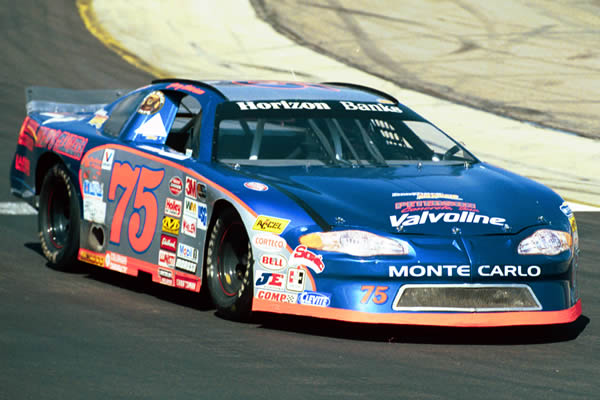
Jerry Robertson has built one of the most impressive racing resumes in the history of Colorado oval-track competition. He began his competitive career by winning rookie of the year honors in the Colorado National Speedway Sportsman division at age 19, and moved up to the Late Model division in 1984. From 1985 to 1993 Jerry toured the United States while based in South Carolina, winning 126 dirt Late Model races, many of which were special events attracting some of the most well-known drivers of the era.
Jerry and his family returned to Colorado in 1994, at which time he resumed driving in weekly events at Colorado National Speedway, which had been paved in 1989. In his first year of asphalt racing, Jerry won the most trophy dashes and main events on the way to Rookie of the Year and Grand American Modified division Championship honors. From 1995-1999 Jerry raced in the multiple NASCAR divisions, as he gained experience on asphalt tracks. He had two top ten qualifying runs out of three starts in the Craftsman Truck Division, as well as two races in a Busch Grand National car at the Las Vegas Motor Speedway and Hickory Speedway. For the 2000 Season, Jerry decided to compete in every race of the season at Colorado National Speedway in order to compete in the NASCAR Weekly Racing Series. He won the Late Model division championship, a record ten main events, was awarded the NASCAR Great West Region Champion and voted Oval Track Driver of the year by regional sports writers. He matched his record main event win total in 2001, and again won the CNS Late Model season championship and NASCAR regional Championship. In 2003, he extended his record with eleven main event wins, and was the NASCAR Northwest Champion in 2004. From 2000 to 2005, Jerry won and astonishing 51 main events out of 76 Races he entered. He still holds several records set during that period, including winning the “Pepsi Challenge” twice, event speed records for 40 and 100 lap races, and most main events in one season, set twice with 11 victories. He is the only CNS driver to have won three Southwest Tour races at the track as well.
In 2005, returned to the Busch Grand National division, teaming with Barney Visser in the first years of Furniture Row Racing. He drove part-time in the series for the next three years, often out-qualifying established national teams as the team turned toward the successful operation it is today. He also qualified for his first Nextel Cup race in 2005.
With his son Darren becoming a successful driver in the Late Model division, Jerry has maintained a support role as owner Robertson Racing in the past ten years, operating the race car fabrication business while serving as crew chief for Darren and entering a select few races as a driver. One most notable event entered in this period came in 2014, Jerry, his dad Odie (who is also a 2016 Hall of Fame inductee), and Darren made historical news by being the first three-generation competitors in a NASCAR-sanctioned race when they competed against each other in a feature event at Colorado National Speedway.
Jerry Robertson has brought national attention to Colorado racing through a versatile career consisting of 164 main event victories on both dirt and paved tracks, four track championships and three regional NASCAR titles, and he time spent at NASCAR’s highest levels of competition. He continues his devotion to the racing community today through his business and support of local racers trying to find the fast line around the track.
Lee Beard
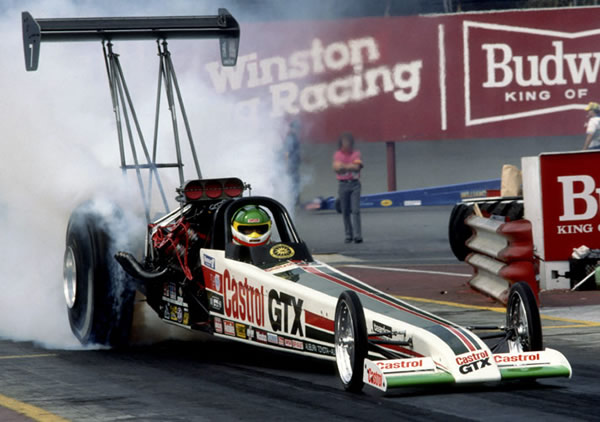
Lee Beard recently retired as one of the most successful crew chiefs in the History of NHRA drag racing. A Pueblo native, Lee enjoyed a career that spanned 35 years and included 55 National Event wins in Top Fuel and Funny Car classes. His first win as a crew chief was in 1980 at Bandimere Speedway High Nationals.
A few of his career highlights include being crew chief for 1989 NHRA Top Fuel World Champions Gary Ormsby, and serving as team manager for 2008 NHRA Top Fuel World Champion Tony Schumacher. Lee also won the U.S. Nationals in Indianapolis with drivers Ed McCulloch, Cory McClenathan, and Whit Bazemore. Lee was recognized for his success by being named Car Craft Magazine Crew Chief of the year, and 1989 Person of the Year. An NBC Documentary, “Hidden Heros”, highlighted his story.
During his remarkable career, Lee’s cars have set numerous National records in both Funny Car and Top Fuel classes, and have won Mile High National titles with Cruz Pedregon in Funny Car and Hot Rod Fuller in Top Fuel divisions. He is the only crew chief in NHRA history to win titles in those divisions with 12 different drivers. He truly is one of the most successful drag racers to hail from Colorado!
Odie Robertson
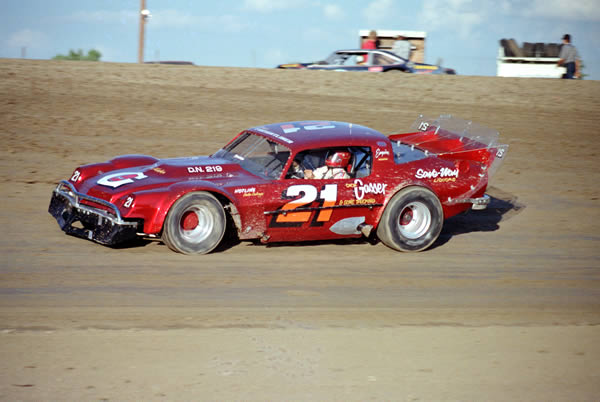
Odie Robertson began his racing career in 1960, driving a 1951 6-cylinder Chevrolet at El Cajon Speedway, which was then a dirt track in El Cajon, California. By the late 60’s he was racing at tracks around the Los Angeles area, including Irwindale, Ascot Park, and Saugus Speedway. While driving a 1957 Chevrolet known as the “Diamond 5”, he raced against notable drivers such as Roger Mears, Rick Mears, and Ivan Baldwin while finishing second in points in the West Coast NASCAR Sportsman Division.
Odie moved his family to Colorado in 1970, and continued his racing career by competing events at Lakeside, Englewood, Colorado National and Century 21 Speedways. From that first year, until he stopped racing in 1981 to help his son Jerry begin his own competitive career, Odie split his racing time between weekly programs at Colorado tracks and big events at various tracks throughout the western United States, including the NASCAR Winston Western 500 at Riverside International Raceway. Track records show him finishing high in the points year after year at Englewood Speedway and Colorado National–winning the most main events three years in a row, as well as the track Championship at Colorado National Speedway in 1976–in spite of not running the full local track schedule while pursuing the “Big Money” shows at out of town venues. Other highlights include winning the first Challenge Cup race at CNS in 1975, a feat he repeated in 1980; winning the 1980 Oregon Cabin Kraft 100 at Medford Speedway, which was highest paying dirt track race in history at the time; finishing second in points in the 1980 Oregon Speedweek Northwest Tour held at tracks in Oregon, Washington, and British Columbia; and winning the 1981 Western World Championship at Manzanita Speedway in Phoenix, Arizona.
Another major move occurred in 1989, when Odie, now living in South Carolina, came out of retirement to race against some of the best dirt late model drivers in the country, finishing in the top 3 several times and winning a main event at Antioch Speedway in North Carolina. The 1990’s saw Odie racing special events at many tracks, including Colorado National Speedway, where he finished third in the Grand American Modified division at Challenge Cup XX, his first time racing on asphalt in over 20 years. In 1999, he won the South Carolina State Championship Tour in the Limited Late Model class at age 60. He was honored as #19 on the list of the Top 20 Dirt Late Model Drivers of All Time by Dirt Late Model Magazine in 2007, and became the oldest driver to finish in the top 10 of Colorado National Speedway’s Challenge Cup at age 73 in 2012. Odie was directly involved in one most notable events in oval track racing history in 2014, when he, son Jerry (who is also a 2016 Hall of Fame inductee), and grandson Darren became the first three-generation drivers to complete a NASCAR-sanctioned race when they competed against each other in a feature event at Colorado National Speedway. The event gained national recognition in several news outlets and racing publications, but was not the end to Odie’s career, as he has continued to compete in local racing events to this day.
Odie Robertson’s career has been one of great accomplishment and numerous victories over 55 years and 28 racing seasons on both dirt and pavement tracks. His influence on other drivers, including his son and grandson, has been substantial and a part of a legacy that now includes induction into the Colorado Motorsports Hall of Fame.
Scott Backman
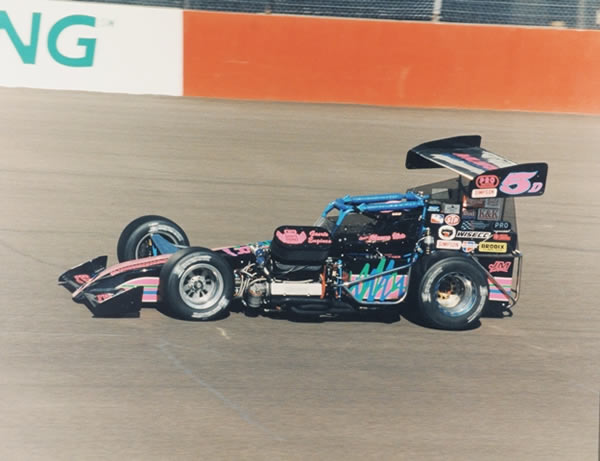
Scott Backman formed a passion for racing as he grew up watching members of his extended family compete in events at Englewood and Lakeside Speedways. He served as a pit crew member on the CARC Modified piloted by his brother Jack at Lakeside, from when he was finally old enough to get into the pits until 1985, when his own racing career got its start. Over the next 24 years, Scott drove CARC Modifieds, Englewood Racing Association Supermodifieds, Grand American Modifieds, Pro Trucks, Late Models, and NASCAR Touring Series Late Models, accumulating 71 event wins and two track championships. He was a Rookie of the year in the following divisions: ERA Supermodifieds in 1984, Colorado National Speedway Grand American Modifieds in 1996, Colorado National Speedway Pro Trucks in 1997, and NASCAR Elite Series in 2006.
Some career highlights include competing at 34 tracks around the country, with event wins at Mesa Marin Speedway in Bakersfield, CA, Beacon Hill Speedway in Pueblo, CO, Colorado National Speedway in Dacono, CO, Meridian Speedway in Meridian, Idaho, and Madera Speedway in Madera, CA, as well as finishing 8th in the Firestone Indy Lights race of the Denver Gran Prix in 1991. He recorded 11 feature wins, most quick times and trophy dashes in his 1989 Supermodified Championship season at Colorado National Speedway, and set track records at CNS, Beacon Hill Speedway and Portland Speedway. In 2006, he represented the state of Colorado in the Toyota All-Star Shootout at California’s Irwindale Speedway.
In addition to his on-track accomplishments during his 43 year involvement in racing, Scott Backman has aided local racers through his sign and graphic design business, contributed much charity work and readily lent support to regional events through car and driver appearances whenever called upon. He worked as track manager for Colorado National Speedway for several seasons, and has ably contributed to the Colorado Motorsports Hall of Fame as a board member and as its current president.
